Ian Wright and Forest of Dean Social History reserve the copyright of this article but give permission for parts to be reproduced or published provided Ian Wright and Forest of Dean Social History are credited in full.
Introduction
Noxon Farm was a 180-acre dairy farm owned by the Crown. In the years 1961 to 1984, the farm was tenanted to Ken Wright who lived at the farmhouse with his wife, Olive, and where they brought up their children, David, Ian and Susan.
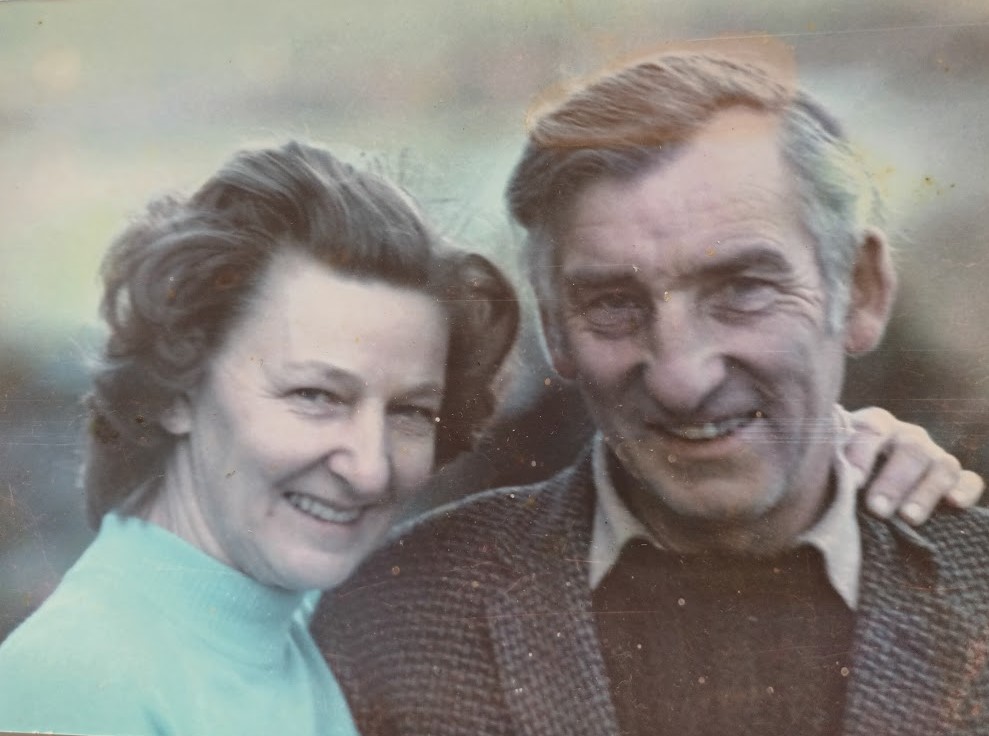
After the retirement of Ken in 1984, David took on the tenancy and moved into the farmhouse with his wife Caroline where they brought up their daughters Hannah and Abi.

In 1963 Ray Ruck started to work at Noxon and moved into one of the Crown cottages with his wife Shirley where they brought up their three children Stephen, Terry and Andrew. Ken died in 1986 but Ray continued working at the farm until 1996. David gave up the tenancy in 2004 following the outbreak of foot and mouth disease and the slaughter of the dairy herd.

The farm was part of the much larger Clearwell Estate which, from 1919, was owned by the Crown. In the nineteenth century, the nearby Noxon Park and Oakwood Valley were bustling with industrial activity with coal and iron ore mines, limestone and sandstone quarries, foundries, blast furnaces, tram roads and railways. The area is now managed by the Crown for timber production although some areas of the woodland have been left to grow wild.
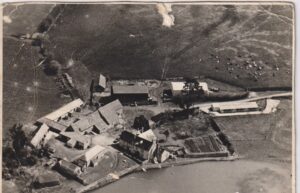
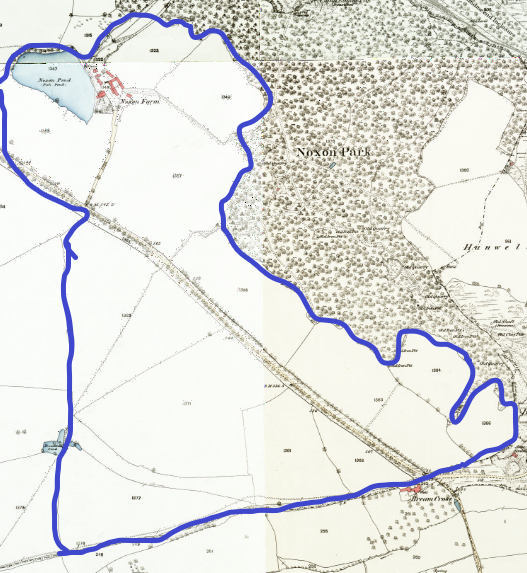
Ancient History
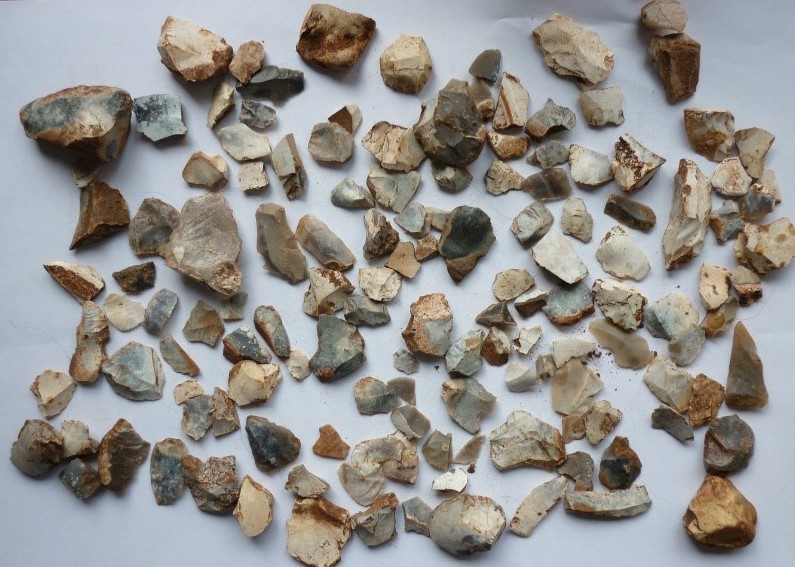
In ancient times hunter-gatherer tribes roamed the highland surrounding the area now occupied by Noxon Farm. Many flints used by Mesolithic and Neolithic people have been found scattered on the surface after the ground has been ploughed. In a field walking expedition in the large field south of the avenue in the above map, the Dean Archaeology Group found a massive 555 flints including cores, scrapers, and arrowheads. The presence of Neolithic and Mesolithic flints amongst the assemblages may suggest that these areas were occupied periodically or continuously over a considerable period. The presence of burnt flints characterised by small cracks indicates that the area may have been used for short-stay campsites and domestic purposes such as cooking and heating water. Romano-British sherds of pottery were also found.
Noxon Estate
The first record of a place called Noxon is in a reference to Sir John de Wysham who, on 3 June 1317 was granted the ‘King’s Fish Pool’ and 200 acres of ‘forest waste’ at Noxon in the Forest of Dean (increased to 280 acres which were cleared by 1321) on account of his good service to King Edward II. The rent was 70s 6d a year. This is probably the area covered by part of the existing Noxon Park and the existing ground area north of the avenue and up to the Park.
Wysham was an English knight who served as Constable of St Briavels Castle from 1310 to 1318 when he lived in the Forest of Dean. The Constable was the keeper or warden (custodes) of the Forest under the Crown. After he died in 1332, his son John de Wysham inherited the Noxon Estate. The fishpool at Noxon in 1317 was probably on Oakwood Brook. The large pond that adjoins the farmhouse now appears to have been made later, but before 1840, by damning the top of Oakwood Valley.
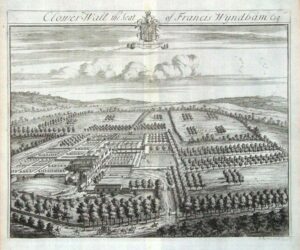
By the end of the 14th century Noxon Estate had passed to William Wyesham, who leased it to Isabel, widow of John Joce, and in 1403 conveyed it in perpetuity to her and her second husband John Greyndour (1356-1416) owner of an estate of about 2000 acres around nearby Newland and Clearwell. It was then passed to John’s son Robert (1388-1443) who was the first owner of the estate to be styled as ‘of Clearwell’ or ‘of Clowerwell’ rather than ‘of Newland’, the large village in whose parish the estate lay. In the mid-15th century, Robert Greyndour started building the first house on the site, comprising a hall, a chapel and 12 chambers. Nothing now remains of this house.

After Robert died in 1443 the Clearwell estate passed by marriage to the Baynham family in 1484, and it remained in their possession until 1611, when it again passed by marriage to the Throckmortons. In the mid-17th century, Sir Baynham Throckmorton was a leading figure among the county gentry and one of the senior officials in the Forest of Dean. He had to pay a large fine to recover his estate from sequestration in the Civil War and subsequently forfeited it again and had to buy it back in 1653, crippling the family finances. In 1698 his son’s heirs sold the house to Francis Wyndham of Uffords Manor (Norfolk) and then to his son Thomas who built the existing Clearwell Castle. The estate passes down from Thomas Wyndham to his son, Thomas of Dunraven, and then on to Dunraven’s daughter, Caroline. Clearwell Court, as it was then known, passed hands numerous times before being purchased by Colonel Charles Vereker.

Noxon Farm
There is evidence of medieval cultivation as the remains of a ridge and furrow system can be seen on the bank on the far side of the existing pond. There were farm buildings at Noxon in 1443, but in the 16th and early 17th centuries most of the land was used as a park and in 1611 it had two lodges, a new one and an old one. There is documentary evidence for hunting or game keeper’s lodges at Noxon Park.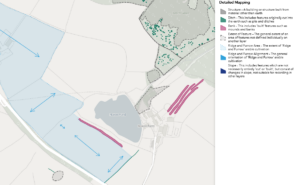
A 1608 map shows the area to the north of the avenue as wooded with large open fields to the south of the avenue. Noxon Farm may occupy the site of one of the lodges mentioned above, though the surviving house dates from the late 17th century. Its main range was probably built in two stages at that period, with the west end the earlier. During the 19th century, the house was much altered and additions were made to its south side in three or more stages.

A 1782 map of the Forest of Dean shows the area now occupied by the farmland between the avenue and the woods as open parkland and the Lord of the Clearwell manor may have used this for hunting. The small building marked on the map may have been a hunting lodge. However, an 1840 map shows the existing farmhouse, farm buildings and a field system.
So at some stage, in the eighteenth century most of the land on the Clearwell Estate was enclosed and hedges planted, some of which remain today. The estate was divided up into plots of land of about 150 acres and let to tenant farmers.
One of these plots of land was Noxon Farm which occupied the land on the south-western side of the Noxon estate including Bradfields, while the north-east side, chiefly comprising Noxon Park wood, was maintained as woodland and mined for iron ore and coal.
The Constants
The family who were tenants and lived at Noxon from about 1650 to 1869 were called Constant and they were both farmers and free miners who mined coal and iron ore in Noxon Park and elsewhere. The tenancy was held by Israel Constant (1741-1790) and then by his son John Constant (1771-1851).

In the 1770/80s Israel Constant and Joseph Constant worked a pit called New Work in Noxon Park. In the 1790s, Israel Constant mined coal with others in Noxon Park at levels called Dog Kennel and Merry Way and paid royalties to the owners of Clearwell Estate.

Note in the above map the border of the Statutory Forest marked by the dotted line is north of the small area of woodland which is part of Noxon Park. When John Constant registered as a free miner in 1838, he was mining coal at Nags Head and Stoning Stile Level. In 1841, he was mining Endeavour Level at Dark Hill and Drybrook Folly level.
1841 Census
| Name | Role | Age |
| John Constant | Farmer | 70 |
| Sarah Constant nee Mudway | Farmer’s Wife | 58 |
| Thomas Constant | Farmer’s Son | 25 |
| Harriot Constant | Daughter | 16 |
| Henrietta Constant | Daughter | 14 |
| Israel Constant | Farmer and John’s Brother | 67 |
| Elizabeth Mudway | Sarah’s Mother | 84 |
| Thomas Mudway | Sarah’ Brother | 35 |
| Maria Ward | 15 | |
| Angelina Goode | 5 | |
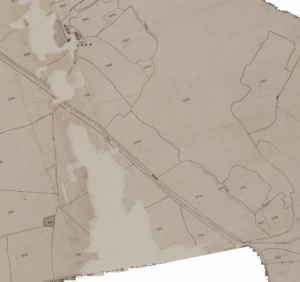
John Constant’s wife was Sarah Mudway who was the daughter of Richard and Elizabeth Mudway who held the tenancy of Cauldwell Farm until he died in 1824. Elizabeth and her son Thomas held the Caudwell tenancy until 1840 when they sold up and moved to Noxon. Elizabeth died in 1842 and then Thomas took up the tenancy of Stowe Green Farm.
After the death of John Constant his son Thomas Constant (1820-1869) inherited the tenancy and concentrated on farming. Thomas’s only son Thomas Benjamin Constant (1864 -1945) was too young to inherit the tenancy but later emigrated to America.
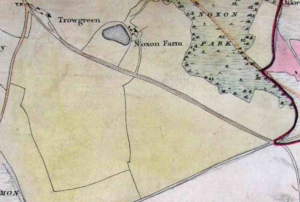
1851 Census
| Name | Role | Age | ||
| Sarah Constant | Widow and retired | 65 | ||
| Thomas Constant | Son and Tenant Farmer | 30 | ||
| Harriot Constant | Daughter | 26 | ||
|
Daughter | 24 | ||
| Mary A Holbrook | Servant | 32 | ||
| William Hopkins | Farm Labourer | 23 | ||
| John Davies | Farm Labourer | 16 |
1861 Census
| Name | Role | Age |
| Thomas Constant | Tenant Farmer | 40 |
| Kate Constant | Farmer’s Wife | 22 |
| Henrietta Constant | Daughter | 3 months |
| Alfred Smith | Cousin and Farmer’s son | 32 |
| Mary Anne Holbrook | Servant | 41 |
| Ellen Goslen | Dairy Maid | 21 |
| William Price | Servant | 15 |
New Tenants
In 1871 the tenancy was held by Captain John Henry Dighton who lived at Tan House and then Oak House in Newland and employed Richard Harris to live at Noxon to manage the farm.
1871 Census
| Name | Role | Age |
| Richard Harris | Farm Labourer | 53 |
| Mary Taylor | Servant | 63 |
| William Oliver | Farm Labourer | 63 |
| Edwin Harris | Farm Labourer | 82 |
In February 1883, Noxon was let on a lease of five years at £240 per year to Rees Thomas from Maesycrochan, Farm near Cardiff who then sublet it to David Thomas (no relative) from Wales on a lease of one year from February 1883. However, Rees Thomas broke the terms of the lease by abandoning the farm after one year and emigrating to America leaving the farm in a poor state.
1881 Census
| Name | Role | Age | ||
| David Thomas | Tenant Farmer | 41 | ||
| Elizabeth Thomas | Farmers Wife | 36 | ||
|
Farmer’s Daughter | 14 | ||
| Ida Catherine Thomas | Daughter | 11 | ||
| Frederick William Thomas | Son | 9 | ||
| Blanch Jane Thomas | Daughter | 5 | ||
| Ellen Gwendoline Thomas | Daughter | 3 | ||
| Charles Sam Philips | Brother and Retired Farmer | 33 | ||
| Ann Philips | Charles’s Wife | 35 | ||
| Mary Harris | Servant | 19 | ||
| Barbara Miles | Servant | 15 |
In 1885, the tenancy was held by James Miles at a rent of £200 per year. James had previously held the tenancy of Court, Platwell and Longley Farms. In March 1880, James’s son, 27-year-old Thomas Miles who farmed at nearby Stowe Green farm, committed suicide after a period of depression by hanging himself from an apple tree at his farm.
On Tuesday 17 May 1887, Julia Anna, the 29-year-old daughter of James Miles went missing and the following week notices were posted in local papers offering a £5 reward for information leading to her whereabouts. The family were very concerned that she may have committed suicide, as her brother had done a few years before, and because when she had left home, she was suffering from a form of ‘religious mania’. Sadly, her body was found in the River Severn on Tuesday 24 May near Woolaston. The coroner’s jury found that she had “committed suicide whilst in a fit of temporary insanity”. James also rented a farm at Pencoyd, in Herefordshire and moved there after the death of Julia perhaps out of grief and so his son William took over the running of Noxon.
1891 Census
| Name | Role | Age |
| William Miles | Farmer’s Son | 31 |
| Mary Miles | Sister | 26 |
| Annette Dawe | Border | 51 |
| William Mildew | Servant | 17 |
On Monday 5 December 1892. William Miles, 32-year-old the son of James, fell off his horse when returning from Coleford fair and died because of a broken neck. William had left the Angel in Coleford at about 9 pm when there was snow on the ground. William had a reputation for being reckless and the landlord of the Angel stated that he rode off down Newland Street at a pace. At 10 pm he called in at the Wyndham Arms leaving at about 10 pm. About an hour later his body was found on the ground at Shophouse. This was tragic news for the family having already lost two children to suicide. James Miles was ill in bed and his wife was away in Herefordshire at another farm her husband rented. In January 1905, James Miles sold up.
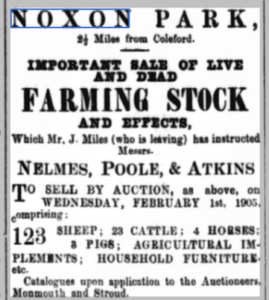
In 1911 the tenancy was held by Stanley Teague, the son of James Teague from Trowgreen Farm. Stanley gave up his Noxon tenancy in January 1924.
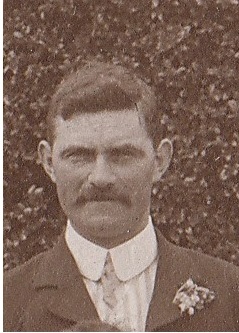
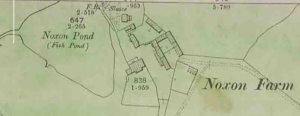
1911 Census
| Name | Role | Age |
| Stanley G Teague | Tenant Farmer | 30 |
| Florence Teague | Farmer’s Wife | 29 |
1921 Census
| Name | Role | Age |
| Stanley Teague | Farmer | 40 |
| Florence Teague | Farmer’s Wife | 39 |
| Ursula Robinson | Niece and Help | 14 |
| Jeffrey Prosser | Horseman | 20 |
| Albert Nash | Cow Boy | 18 |
| Ursula Teague | Daughter | 1 |
Joseph Smith, whose brother Harry Smith farmed at Cherry Orchard, held the tenancy from 1924 to 1932. After Joseph died, Walter Robinson then took on the tenancy until February 1935.
The Williams Brothers
Harold George Williams and Alfred Horris Williams held the tenancy and lived at Noxon with their housekeeper Julia Sully and their mother Mary (until she died) from 1935 until 1960. Harold and Alfred had been brought up on Abbey Farm Chapel Hill Near Chepstow and then had worked at Tan House Farm in Newland.
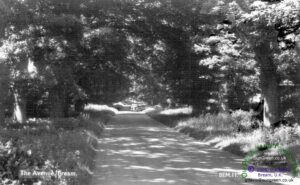
During this period brothers Trevor & Basil Vaughan worked on the farm. They both lived in one of the cottages next to the church in Bream until they married. The cottages were demolished in about 1961. Basil married Margaret who was a land girl from London, and they lived in one of the two crown cottages on the avenue at Trow Green which were designated for farm workers from Noxon or Trow Green. Basil worked at Noxon as soon as he left school and then right through the war years until he left to work in the car factories in Oxford in the 1970s. Trevor married Eileen from Viney Hill and at first lived on Brockhollands Rd and then moved to their own house at The Tufts in Bream.

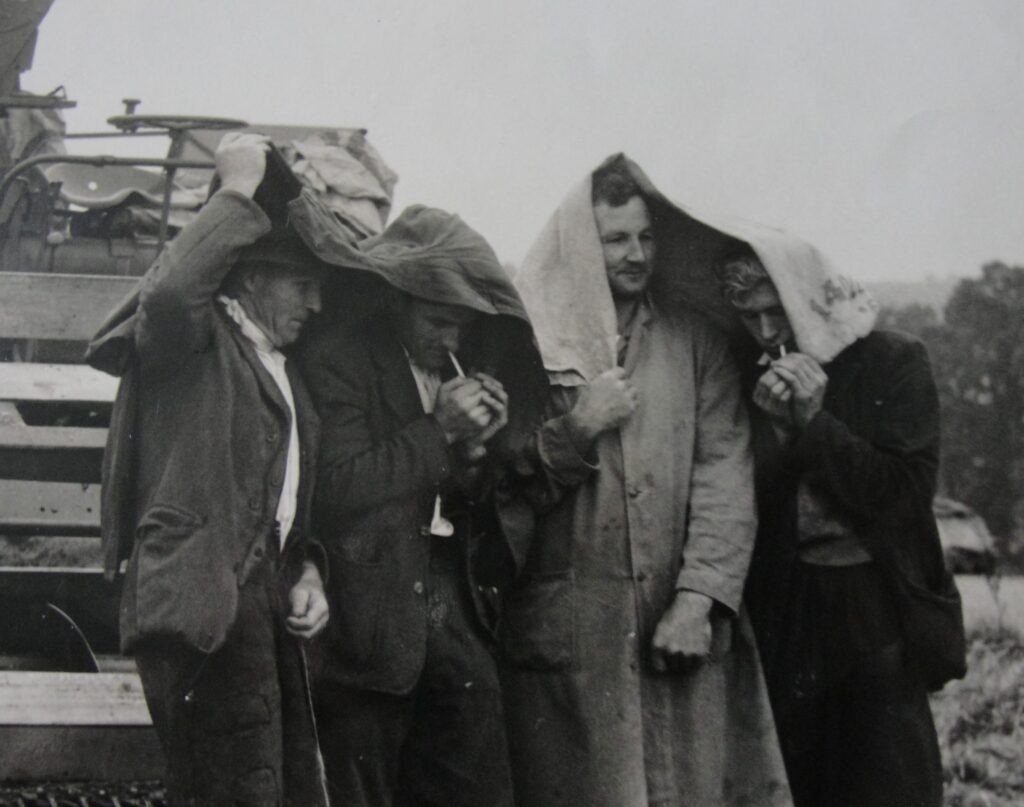

In 1960 the Williams brothers retired and the new tenancy was awarded to Ken Wright who previously held the tenancy of Blacklands Farm near Old Basing in Hampshire with his brother-in-law. In 1960, Ken, Olive, David, Ian and Susan Wright moved to the farm and Ken set about building up a herd of dairy cows as well as keeping pigs and chickens and growing potatoes. Not long after this, Trevor left Noxon and went to work at the Rubber factory in Lydney.

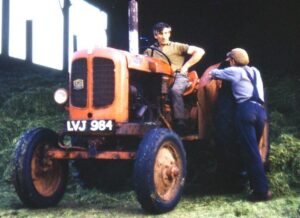
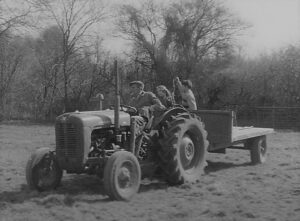
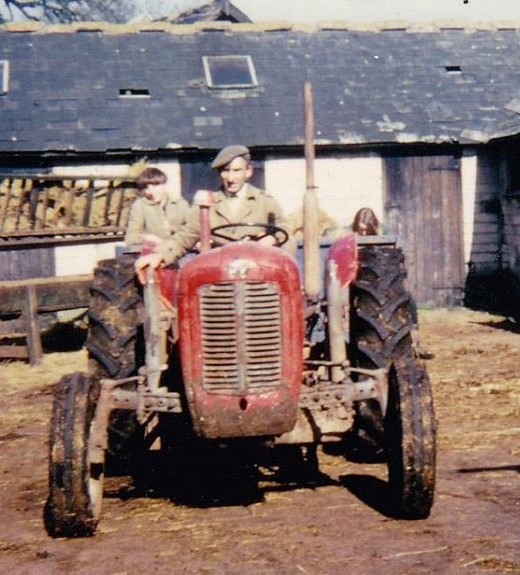

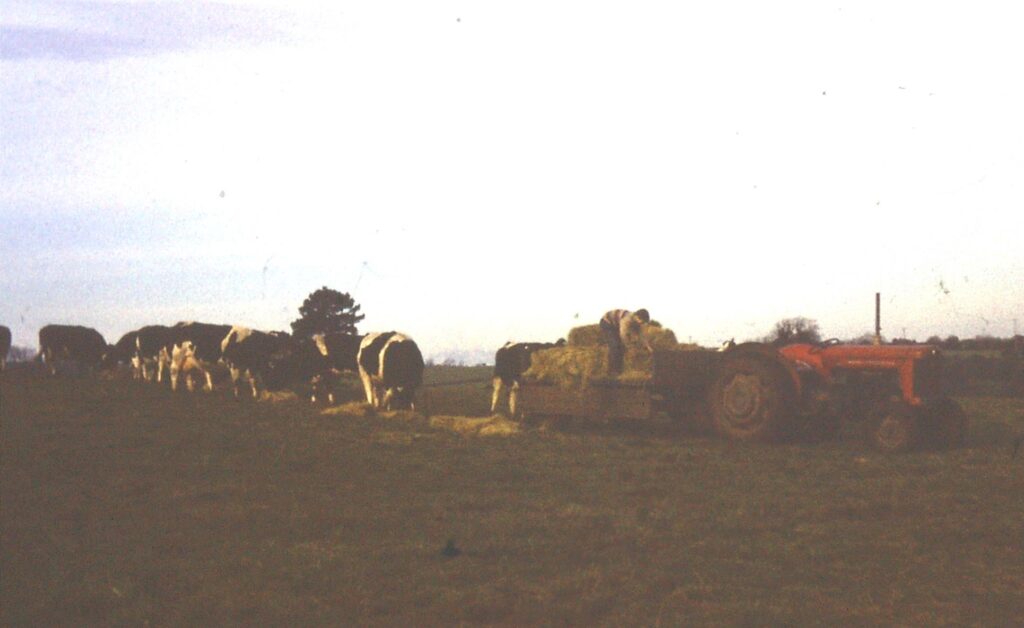

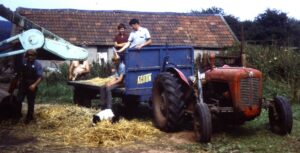
As a farmer’s wife Olive had a busy domestic schedule. She also kept chickens, took in lodgers and bed and breakfast. In this she received the help of Nellie Preest who lived in Bream with her husband. Their son John also worked on the farm for a while.




Ken died in 1986 and his eldest son David then took on the tenancy. Dave’s sister Susan and her husband David Morris lived and worked on the farm between 1983 and 1987.
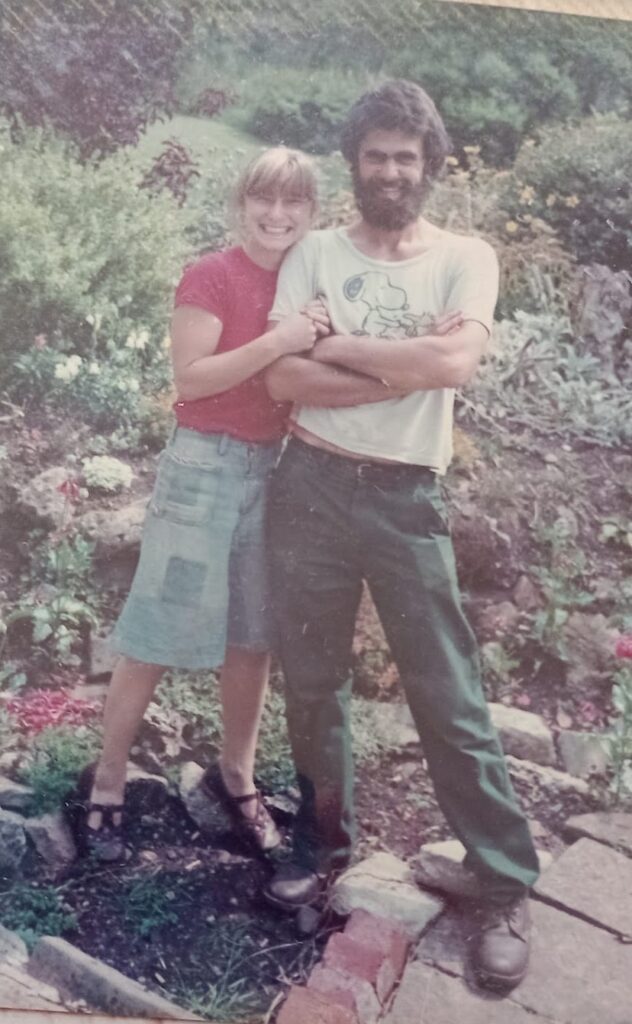
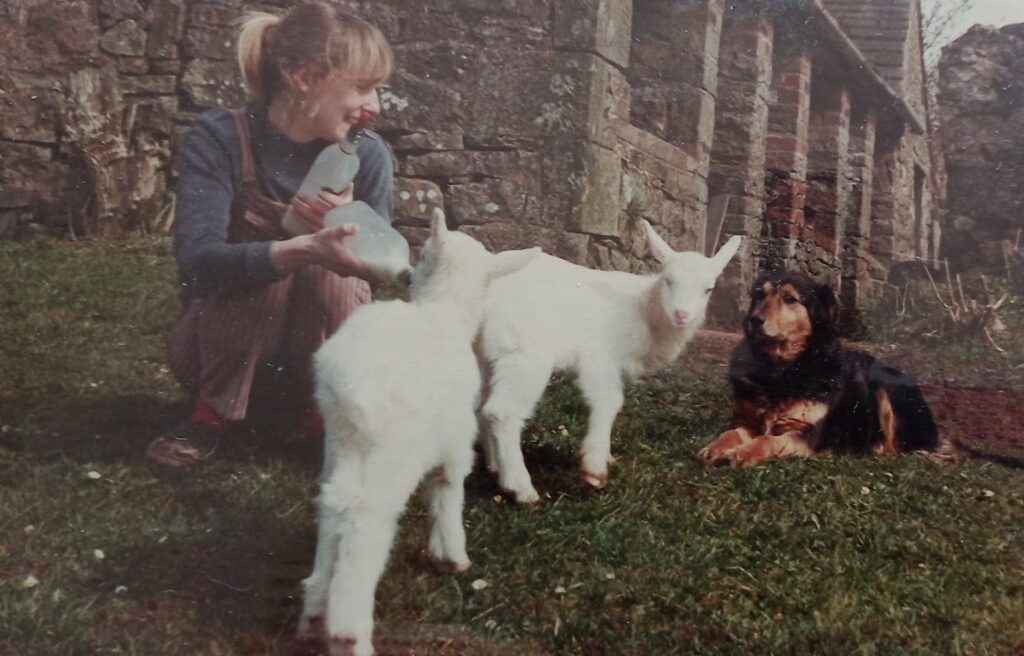

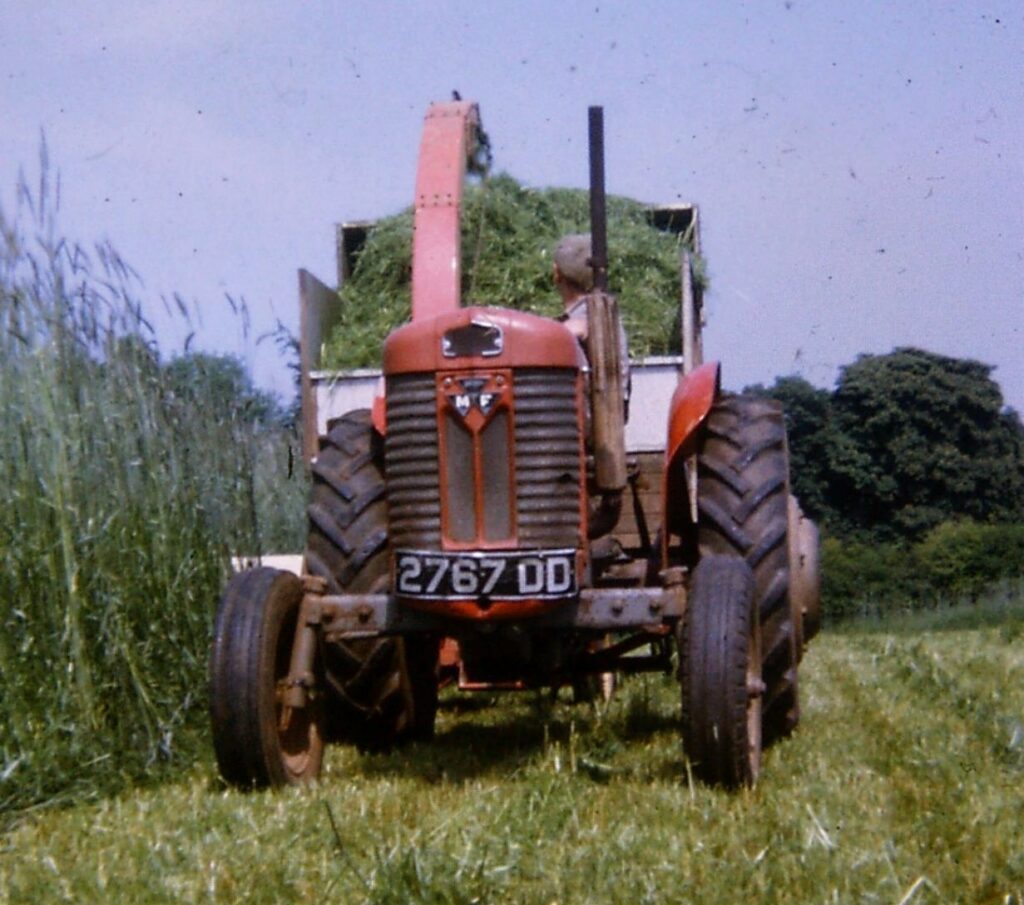

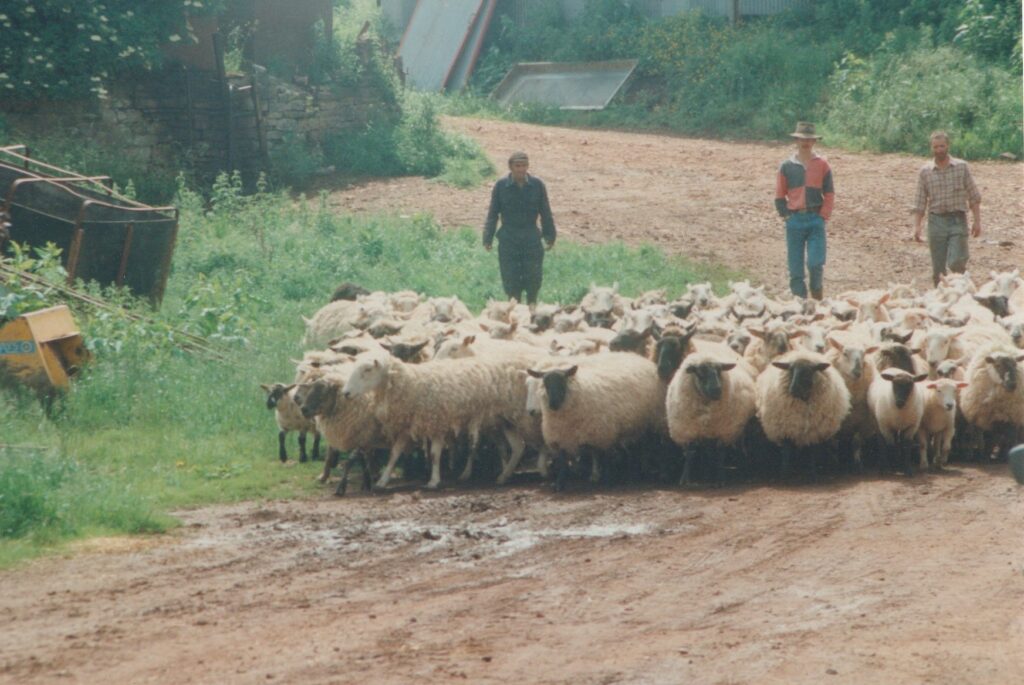
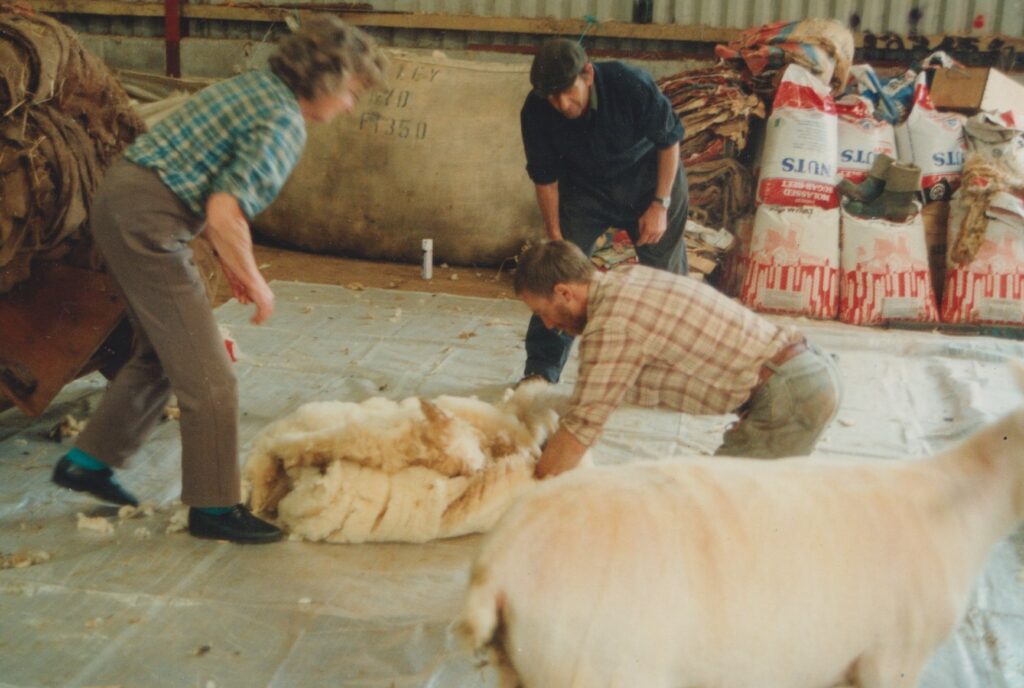
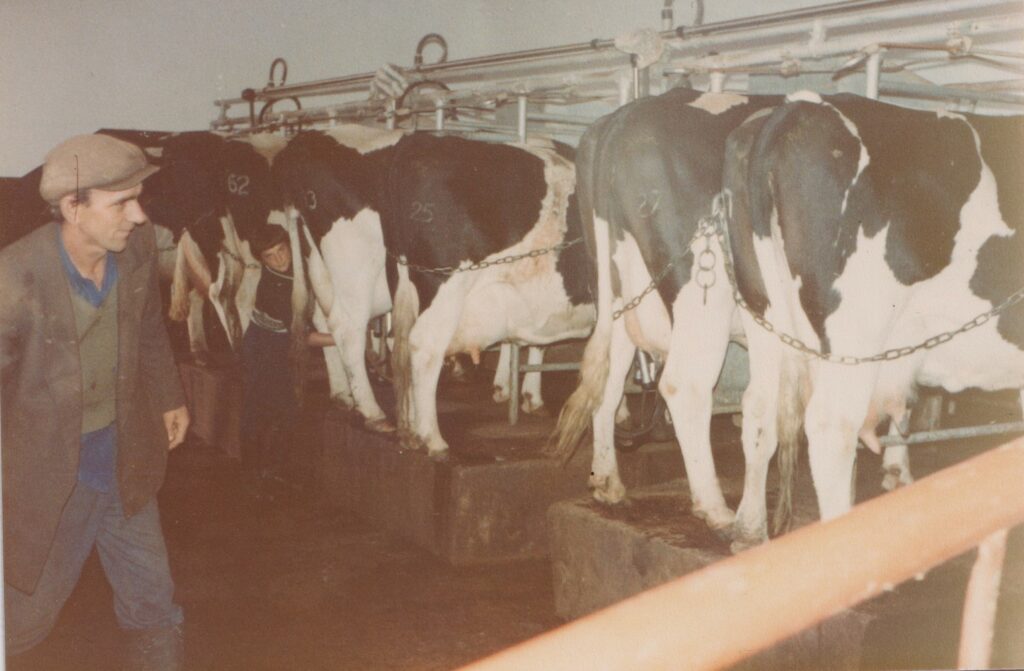
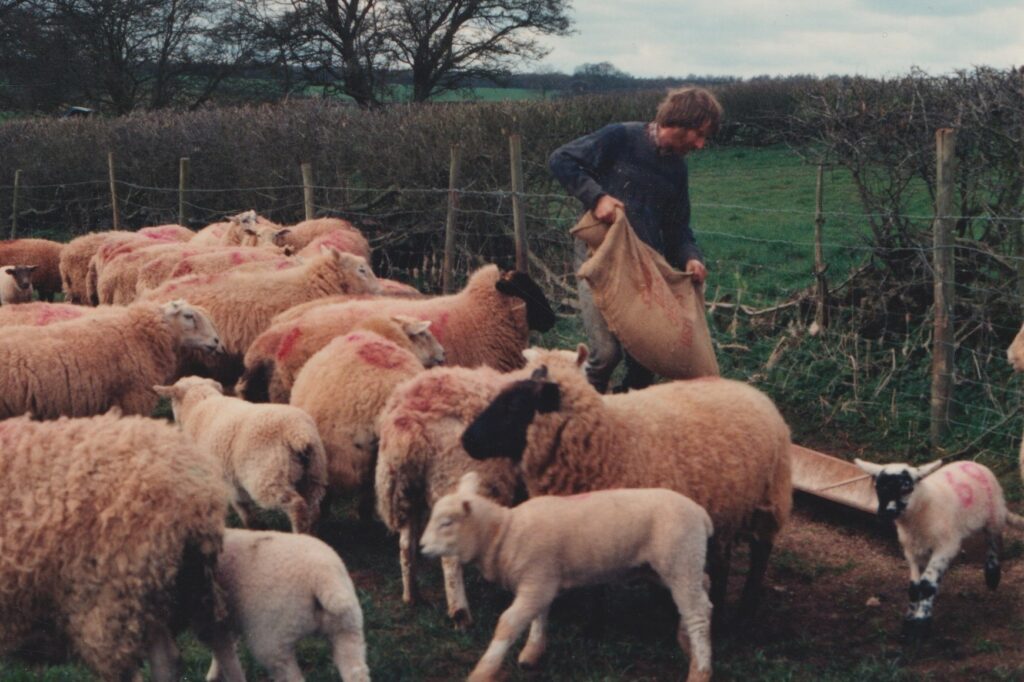
During the period from 1961 to 2003, the following people were also employed at Noxon; Trevor Vaughan, Ray Ruck, Mike Watts, Barry Isles, Gerald Haynes, Norman Sterry, Melvin Ruck, John Preest, Donald Johns, David James, Basil Beard, Gerald Gunter, Gordon Jones, Kevin Tye, Bill Grayson, Steve Ruck, Claire, Monty Gaulding.
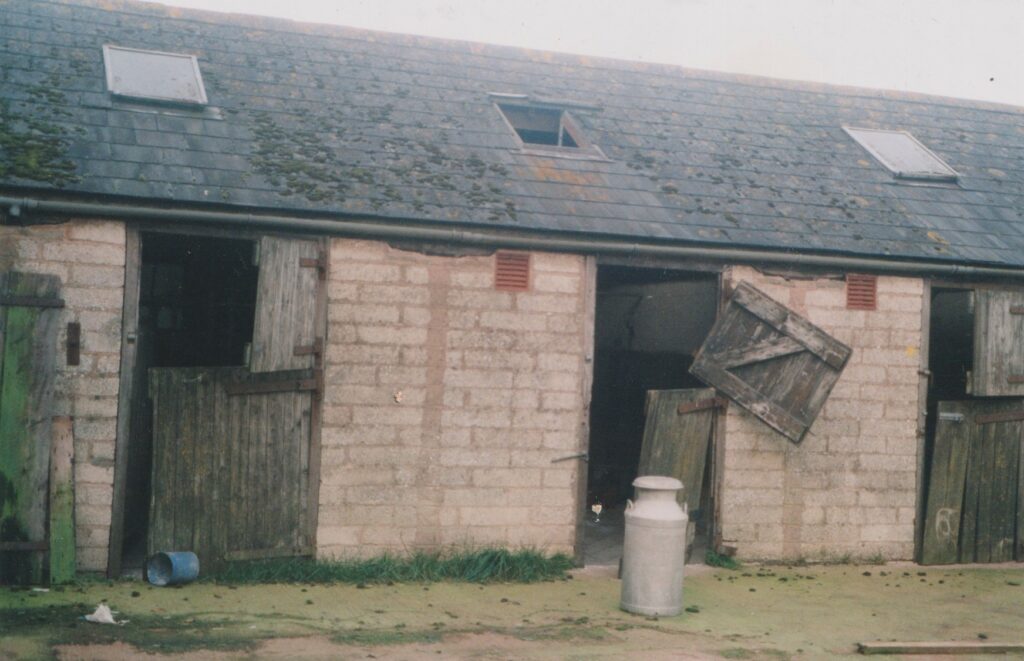
Oakwood Valley and Noxon Park
The history of Noxon is about iron ore, coal, limestone, charcoal and timber as well as about agriculture. Oakwood Valley which descends on the northeast boundary of the farm was rich in natural resources and at times in the past was a hive of industrial activity with people working in its mines and quarries, horses and carts, tram roads and steam engines. The remains of a small limestone quarry lie at the top of Oakwood Valley at the back of the farm.
Noxon Park shares a boundary with the modern Statutory Forest and was created out of the land which was assarted under licence in 1317 by Sir John de Wysham as described above. This may have encroached into land which was originally part of the Royal Demesne which later became the Statutory Forest.
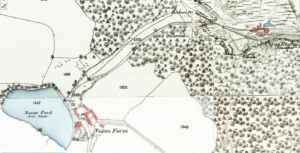

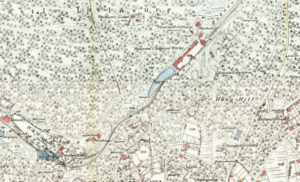
Iron Ore
Noxon Park was rich in iron ore and evidence of its extraction in the form of extensive surface workings in the form of Scowles can be found in the woods at the back of the farm in Noxon Park which is now owned by the Forestry Commission. The Noxon scowles contain some of the most spectacular and best-preserved examples in the Forest of Dean. These consist of hollows, channels, rock faces and pillars, as well as underground workings. Recent studies have indicated that scowles are largely natural features, representing ancient cave systems in the Crease Limestone into which the deposition of iron minerals occurred. Nevertheless, there is evidence of significant modification during mining activity over many hundreds of years by the presence of pick marks, drill holes, and spoil heaps, as well as the volume of material which must have been extracted. Although direct evidence is scanty, some of the workings may date back to Iron Age or Roman times.
The mining of iron ore continued into the mediaeval age. Evidence of the bloomers used to smelt the ore can be seen by the remains of slag found in the soil in and around the farm. Royalties from mining were being paid to the Crown in the 13th century, and there were six small pits in the mid-1700s. The remains of coppices to produce timber for charcoal are also evident.
Mining of ore continued into the nineteenth century with free miners working the outcrop and digging small pits with such names as Scarr Pit, Ashe Pit, Wyche Wylder’s Pit, Lady’s Pit, Brown’s Pit, Little Pit, Knock Pit, Lord’s Pit, Nock Pit, Dog Kennell. Merry Way, Quab, Sackfield, New Work Pit and many more without names. The remains of these pits can still be seen in Noxon Park often as just holes in the ground or caves sometimes leading to more extensive workings. Once the near-surface ore was worked out, mining was extended underground.
The Oakwood Levels
In the early nineteenth century, David Mushet opened the Oakwood Mill Land Level and the Oakwood Mill Deep Level which tunnelled deeper into the ore reserves under under Noxon Park. Mushet was granted the Oakwood Mill Land Level as lessee of a free miner, John Hawkins. An adit was driven 1650 ft to the crease limestone at 375 ft above sea level. Then a level was driven 1000 ft to the southeast and 3500 ft to the northwest. Mushet built a tram road to take the ore to Parkend and the remains of this can still be seen.

This led to a dispute between David Mushet and Lord Dunraven, the owner of Noxon Park, over who held the rights to the minerals under Noxon Park and to whom royalties should be paid. The dispute arose when Dunraven refused to allow Mushet to sink an air shaft in one of the fields on his land. Mushet claimed free mining rights as a free miner and took Dunraven to court. The dispute reumbled on with no resolution. However, Dunraven took at least one miners to court for theft for claiming free mining rights in Noxon Park.
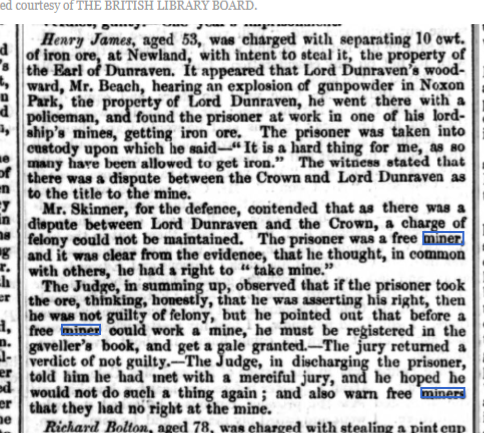
China Engine
The largest mine iron ore mine in the valley was China Engine with extensive underground workings and was in existence in 1835. In 1841 the Dean Forest Mining Commissioners awarded China Engine gale to William Montague of Gloucester and John James of Lydney as lessees of George Stephens, a free miner. The shaft was 189 feet deep and reached creased limestone at 235 feet above sea level. Levels were driven 1700 feet to the northwest and 2900 feet to the southwest. Another level, 375 feet above sea level was driven from Oakwood Mill Land Level and was about 4,300 feet long. There were extensive workings between the two levels and the mine used a steam engine to lift iron ore to the surface and pump out water from the mine.
The Oakwood Tramroad, a branch of the Severn & Wye Railway, was extended to China Engine Mine under a licence of 1855, giving direct rail access to Parkend Ironworks. In 1880 the mine was operated by the Forest Haematite Iron Ore Co. It is estimated that at least 300,000 tons of ore were raised from the mine before it closed in about 1885. The site of the shaft has now been filled in and the ground cleared and levelled, and is now just a grassy area in woodland.
Nearby there was another large iron ore mine called the Princess Louise. The brick-lined shaft is still open and the remains of some building foundations and walls can also be seen nearby. In 1835 the mine started at a level called (New China) here by 1835 and then the Princess Louise shaft, 600 ft deep, was sunk to drain the ground to the dip of the ‘235 ft’ level in China Engine Mine. The Crease Limestone, the main host of the iron ore, was not reached., the mine closed in about 1885.

Noxon Park Mine was said to have been 120 ft deep and was operated by the Great Western Iron Co. in 1880 when 7,028 tons of ore were produced. The total output from China Engine, New China Level and Oakwood Mill Land Level between 1841 and 1892 has been estimated by Sibly to be more than 300,000 tons. However, this does not include the amount of ore mined by working the outcrop and before 1841.
Deatils of some of the old mines in Oakwood Valley:
https://buddlepit.co.uk/mine-explorer/Database/MineDetails.html?id=ySRFDRKzfzlDRd-mcVZ3JQ==
Iron mining was dangerous work. On 20 February 1868 iron miner James Emanuel was working the night shift at China Engine with another man driving the heading and having charged a hole as usual and set fire to the fuse, the powder exploded but failed to bring away the piece of rock intended. James again charged the hole with powder and whilst in the act of withdrawing the wire (or pricker), the powder exploded and killed him. On 21 May 1892, 56-year-old George Kear was crushed by a stone at China Engine and died on his way to Gloucester Hospital.
The remains of a foundry dating from 1852 can still be seen. The foundry made nails and finally closed in 1916. At the bottom of Mill Hill, there is a large house which was once the Oakwood Inn, known locally as ‘The Mill’ and near the site of the Oakwood Mill, a corn mill established in 1820.
Further down the valley are the ruins of the Bromley Furnace. The Ebbw Vale Company, who had mines in the Oakwood Valley, including Princess Louise, started operating this furnace in 1856 and it ceased working ten to fifteen years later.
In the nineteenth and twentieth centuries, the mining of coal using small levels by free miners took place in the valley and the remains of their mines still exist today.
At the end of the valley, there is the extensive site of the Flour Mill Colliery, which was by far the largest industrial site in the Bream area. The chemical works, which produced chemicals and charcoal by heating wood in the absence of air, was built on the site just ahead around 1850 by George Skipp who manufactured various products including wood-pitch and wood-tar but closed in 1900. Further down the valley, there were chemical works. Nearby, are some of the buildings of the large Flour Mill colliery.
Flour Mill was first galed in 1843. Shaft sinking was in progress in 1866, and coal was being produced by 1874. In 1891 the Princess Royal Colliery Co. Ltd was formed to work both Princess Royal (Park Gutter) and Flour Mill. The combined output (with Princess Royal) was 600 tons of coal per day in 1906. An underground connection was made to Park Gutter in 1916, and coal ceased to be wound at Flour Mill in 1928. The mine closed in 1960, but the Flour Mill buildings still exist and are now used by a railway locomotive engineering business.
Details of the Bream Heritage walk which includes parts of Oakwood Valley: https://bhwalk.uk/